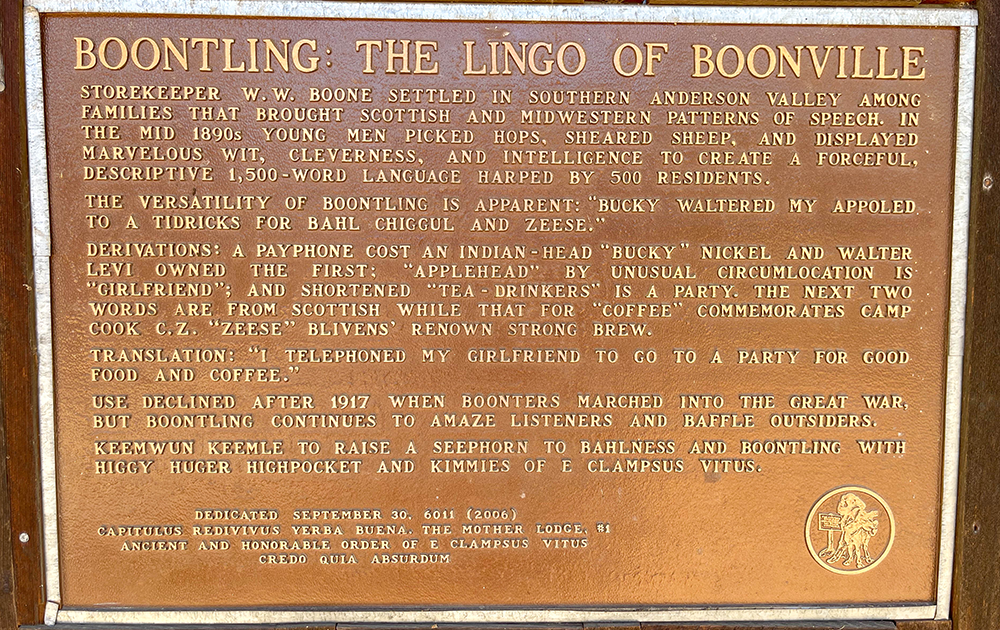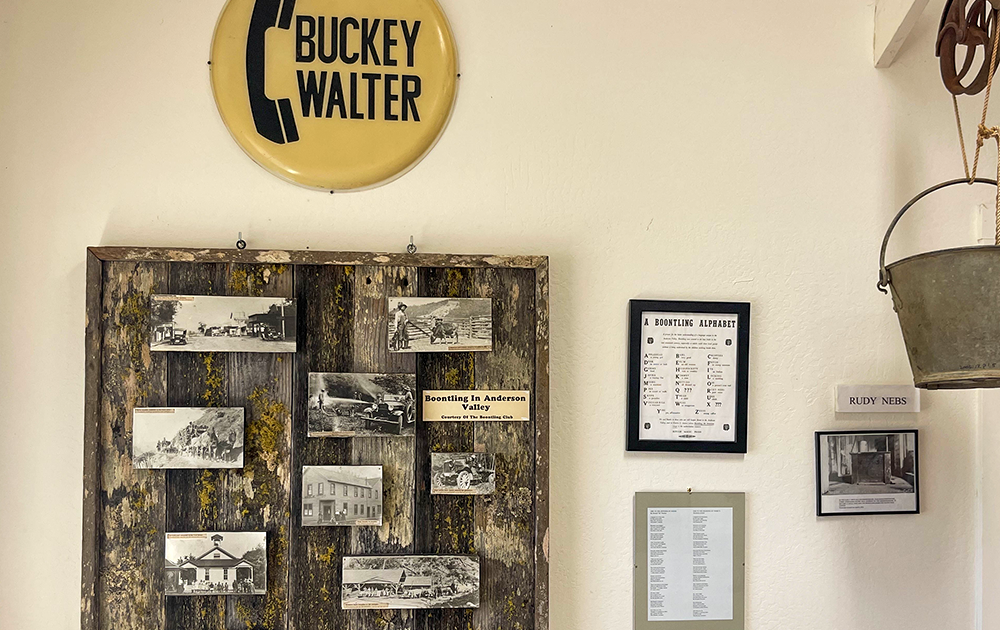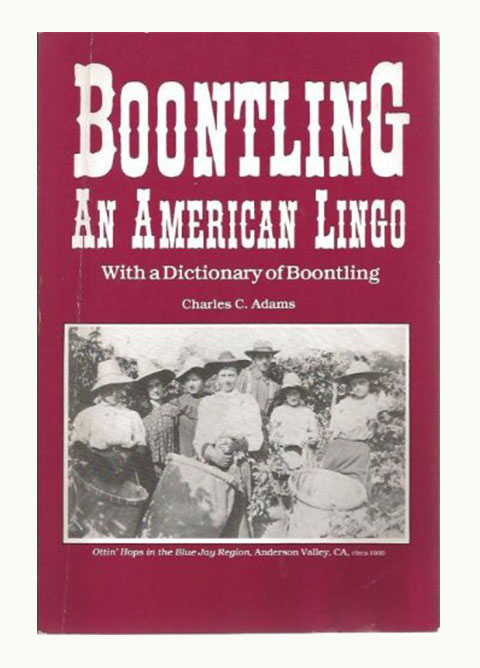Boontling:
A hangin’ higher ‘n bolley’s fiddle (no longer used) ling (lingo) recently harpen (spoken) by the residents of Boont (Boonville) in Anderson Valley. Built around the popular pastimes and occupations of those who lived in the remote Northern California region in the early 1900s, the terms reference a lot of burlappin’ (sex), breggo (sheep), and buzz chick (baseball).
Rumor has it, Anderson Valley locals created Boontling around the turn of the 20th century in an effort to pass the time, gossip under the radar and prevent bright-lighters (city dwellers) and other outsiders from listening in on their blooch (chatter). Established by former transplants to the area who fled their homes in search of greener pastures, the language has an estimated 1,600 terms, most of which are adjectives, nouns and verbs familiar only to locals. Some of the vocabulary even references the names of area residents who were known for drinking too much, tattling on neighbors or otherwise making waves within the small, isolated community.
The Anderson Valley Historical Museum on the western edge of Boonville that is dedicated to helping keep the Boontling history preserved. You can visit the museum on Saturday & Sunday, 1-4 pm.
Boontling Dialect
While less than 100 living Americans know how to speak Boontling and even fewer than that know how to do so fluenty, interest in this homegrown language remains at an all-time high. This is partciularly true among locals, fog-eaters (coast dwellers) and others who frequent frattey dom-gormin tidricks (wine picnics) in this popular wine-producing region.
Visitors who jape (drive) to Boonville can get a glimpse of the country that gave rise to the homegrown language while finding more gorm sales (restaurants and eateries) than anywhere else in the Valley. Poleeko (Philo), too, has plenty to please visitors when they get scottied (hungry), or when they flock to see the frattey shams (grapevines) that produce the region’s best bounty.
The Bucky Walter became the reference for telephone after a local with the name Walter was the first Boonville resident who owned one. The Anderson Valley Historic Society has a booth on display, along with many other Boontling historic items. Buckey Walter is on display at the Anderson Valley Historical Museum.
Boontling Dialect
While Boontling helped Anderson Valley community members establish a sense of regional pride and privacy, schoolchildren in the area also learned the language as part of their studies. Because so few people outside of the immediate area understood the dialect, some locals used its terms to confuse athletic opponents or sneak military messages past censors.
Those who take a pike (stroll) or buckeye (vacation) to Anderson Valley today might have a hard time finding a fluent Boontling speaker. Yet, they won’t find a shortage of locals and historians with an interest in the homemade language. The Anderson Valley Historical Society maintains a photographic and informational history of the language and terminology, and “Boontling: An American Lingo,” a 1971 book by Charles C. Adams, a Boontling authority, also explores the history of the dialect while outlining many of its terms.
It’s no secret that Anderson Valley is perfect for bahl hornin’ (good drinking), but ongoing interest in Boontling also makes it a major draw for history buffs. So, next time you have a hankering to snag some chiggle (food) or down some frattey (wine), hop in the car, grab your best kimmies (men) or apple heads (girlfriends) and make your way to the birthplace of Boontling.
Want to listen to Boontling in conversation? Writer Russ Johnson interviewed a few old timers and recorded it as captured in this Connected Traveler podcast.
Join the community this October 21-23 for the first Boontling-inspired Harvest Tidrick event weekend! Tickets go on sale on August 1st, 2022
Boontling Video Clip
Sign Up for Our Newsletter
Get Updates On The Happenings In Anderson Valley!






